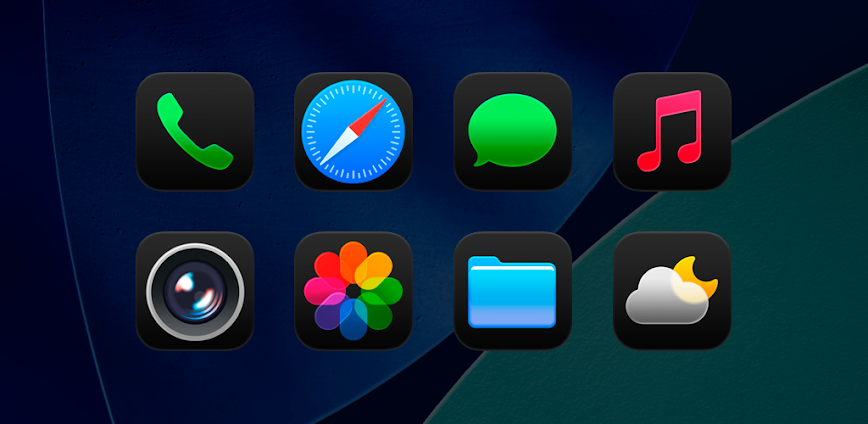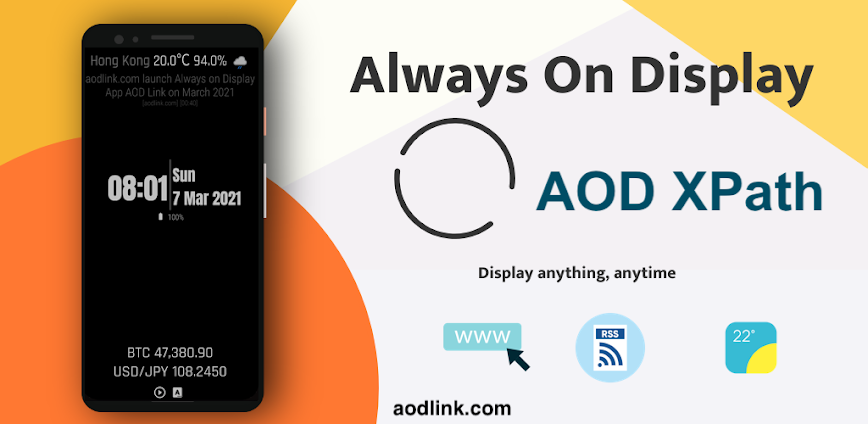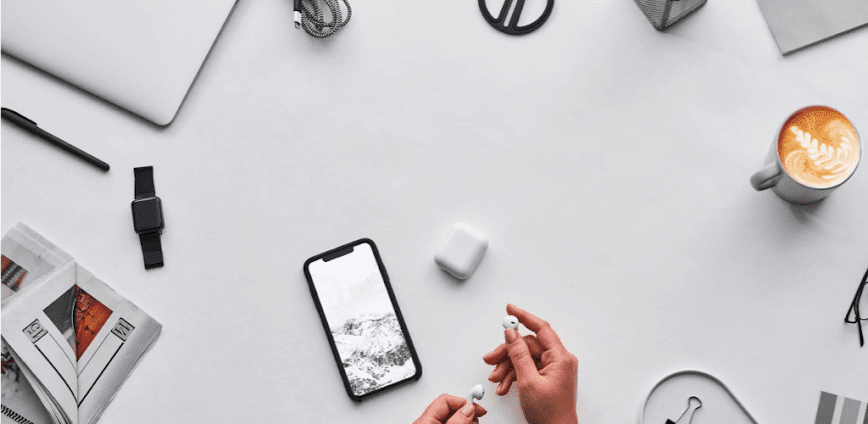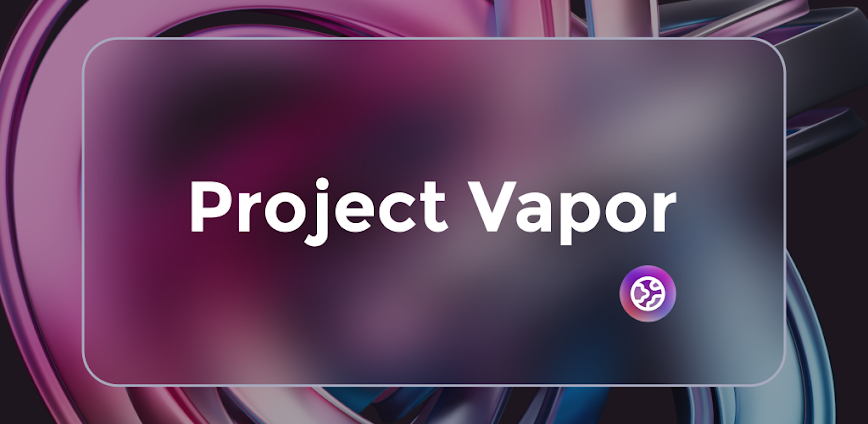Rotation Control Pro Mod Apk v.6.0.0 (Full Version)
- App Name Rotation Control Pro
- Version 6.0.0
- Sizes 4M
- Requirements Android 8.0
- Developer CloudEx Inc
- Genre Personalization
- Updated Nov 09, 2025
- Platform GooglePlay
In an increasingly mobile-centric world, the way we interact with our devices profoundly impacts our productivity and comfort. From avid gamers to busy professionals, smartphone and tablet users constantly seek greater control over their digital environment. A common, yet often overlooked, pain point arises from the device’s automatic screen orientation, which can frequently disrupt workflows or detract from media consumption. This is precisely why advanced screen rotation control solutions are gaining traction, emerging as essential tools for anyone looking to truly master their mobile experience. No longer content with a one-size-fits-all approach, users are demanding nuanced control over their display, allowing them to dictate precisely how and when their screen rotates. This shift towards hyper-personalization underscores a broader trend: the desire for technology that seamlessly adapts to individual habits rather than forcing conformity. As digital lifestyles become more diverse, the ability to tailor basic device functions, like screen orientation, becomes not just a convenience, but a fundamental aspect of an optimized digital life.
Granular Control: Mastering App-Specific Display Orientation
The default screen rotation settings on most mobile operating systems offer a basic choice: either automatic rotation based on device sensors or a fixed orientation, typically portrait. While functional for general use, this limited control often falls short when dealing with the diverse requirements of modern applications. Imagine watching a video, only for it to revert to an awkward portrait mode when you briefly switch apps, or trying to read an e-book in landscape mode, which many readers find less ergonomic. This is where advanced solutions, such as tools for a truly custom Android experience, step in, providing users with unparalleled flexibility to dictate their device’s behavior on an application-by-application basis. This level of granular control revolutionizes the user experience, transforming a generic device into a truly personalized hub.
Instead of a system-wide decree, users can now assign a specific display orientation to individual applications. This means your preferred video player can always launch in landscape, your social media apps consistently remain in portrait, and specific productivity tools can maintain a fixed orientation, irrespective of how you hold your device. This predictive control eliminates the constant need for manual adjustments, significantly streamlining daily interactions and enhancing overall efficiency. The underlying system intelligently processes these user-defined rules, ensuring that the screen behaves exactly as intended the moment an application is launched.
- Individual App Settings: The power to define screen rotation parameters for specific applications is a cornerstone of advanced display management. Users gain the ability to designate a preferred orientation—be it portrait, landscape, reverse portrait, or reverse landscape—for virtually any installed application. This immediate application of the user’s command upon launching an app ensures a seamless transition into the desired viewing mode, removing frustrating auto-rotations that can disrupt focus. For instance, a graphic design app might benefit from a forced landscape view, while a banking application is almost always better served in portrait, ensuring data is displayed clearly and securely without accidental shifts. This precise app rotation control caters to the unique demands of each digital task, optimizing the personalized device experience.
- Starts With Preset: Efficiency is paramount in today’s fast-paced digital world. Advanced rotation control systems are designed to remember and execute user preferences without requiring repetitive input. Once a specific rotation mode is set for an application, this setting is meticulously recorded and stored as a preset. This intelligent memory function means that frequently used applications will automatically adopt their designated display orientation upon launch. Whether it’s a gaming application that demands a specific landscape view or a news reader that performs best in portrait, these presets ensure that your device is always ready to match your activity, saving valuable seconds and reducing interaction friction. This foresight in design anticipates user needs, making device interaction intuitive and effortless, a testament to effective mobile productivity.
- Reverts On Closing: A key aspect of a truly smart display management system is its ability to seamlessly integrate and disengage specific settings without affecting the overall device experience. While an application-specific rotation might enhance usability within that app, it’s often desirable for the device to revert to its default or global orientation settings once that application is closed. This intelligent reversion ensures that the custom rotation command, which was momentarily active for a particular application, is promptly deactivated upon exiting, returning the device to its standard mode. This prevents unintended persistent rotations and maintains consistency across the rest of the user interface, offering a clean and predictable transition back to the home screen or other applications, thus bolstering overall user experience.
Total Device Oversight: Advanced Control and Intelligent Automation
Beyond individual application settings, a truly comprehensive screen rotation utility extends its capabilities to offer overarching control, enabling users to manage display orientation across the entire device with remarkable ease and sophistication. This holistic approach empowers users to dictate system-wide behaviors, overriding even stubborn applications that resist standard rotation commands. The evolution of these tools reflects a growing demand for devices that are not just smart, but contextually aware and adaptable to the dynamic environments users navigate daily. Such robust functionality is crucial for power users and those seeking to fine-tune every aspect of their mobile interaction, ensuring that the device truly works for them, not against them. For more insights on optimizing your mobile device’s performance, explore our comprehensive guide to Android performance optimization.
These advanced controls provide a level of fluidity that standard Android or iOS settings simply cannot match. From quick-toggle access to intelligent, event-driven adjustments, these features coalesce to form a seamless and highly responsive user experience, significantly reducing the mental load associated with constant manual adjustments. It’s about empowering the user with immediate command and predictive automation, creating a more harmonious relationship with their digital tools through sophisticated display management and customization options.
- Force Fixed Apps: While granular per-app settings offer extensive control, there are instances where an application, by its inherent design or due to a specific bug, attempts to force a particular orientation that conflicts with user preference or overall device behavior. Advanced rotation control features provide the critical ability to “force” a desired screen orientation, even for applications that are hard-coded to resist rotation. This powerful override ensures that the user’s command takes precedence, allowing for a consistent experience across all applications. For example, if a legacy app insists on portrait mode but you require it in landscape for a split-screen task, this feature becomes invaluable, guaranteeing that your device adheres to your will rather than being dictated by an application’s internal logic, providing essential advanced settings.
- Convenient Notification Bar: Accessibility is a cornerstone of intuitive design. The most effective screen rotation control solutions integrate seamlessly into the operating system, making essential functions immediately available without navigating through deep settings menus. By embedding quick-access toggles directly within the device’s notification bar or quick settings panel, users can instantaneously activate or deactivate their chosen screen rotation mode with a simple swipe and tap. This “always-on-hand” functionality eliminates friction, allowing for rapid adjustments based on current activity—whether you’re suddenly switching from an email to a video, or need to quickly fix the orientation for a photo shoot. This integration is crucial for maintaining flow and ensuring that device adjustments don’t become a mobile productivity hindrance.
- Smart Event Detection: The pinnacle of advanced display management lies in its ability to intelligently anticipate user needs based on contextual cues. Modern rotation control applications can integrate smart event detection capabilities, allowing the screen orientation to automatically adjust in response to specific hardware or software triggers. For example, detecting the connection of a charger might prompt a shift to a fixed portrait mode for easy glanceability while charging, or the insertion of headphones could automatically trigger a landscape mode, anticipating media consumption. While users retain the ultimate power to override these suggestions, this predictive intelligence significantly enhances the automated aspect of device management, making the screen truly adaptive and reducing the need for manual intervention, thus contributing to a more intuitive and responsive context-aware display.
Boosting Productivity and Enhancing Accessibility Through Tailored Orientation
The practical implications of having such granular and intelligent control over device orientation extend far beyond mere convenience. In a professional context, the ability to precisely manage how applications display content can significantly boost mobile productivity. Imagine a scenario where you’re using a project management tool in portrait mode for data entry, but simultaneously need a reference document in landscape view, displayed via a split-screen or multi-window feature. Without flexible screen rotation control, managing these diverse needs can become a constant battle against your device’s auto-rotate function. The capacity to lock specific apps into their optimal orientation or force them into a desired view eliminates these micro-frustrations, allowing users to maintain focus on their tasks rather than their device’s behavior, thereby elevating the overall user experience.
Furthermore, tailored display orientation plays a pivotal role in enhancing digital accessibility. Users with specific motor control challenges or visual impairments often rely on consistent screen layouts to interact effectively with their devices. An unpredictable screen rotation can be disorienting and frustrating, hindering their ability to navigate and utilize essential applications. By offering robust options to fix orientations, reverse them, or set them per application, these control tools provide a stable and predictable interface, making mobile technology more inclusive and user-friendly for a broader audience. This focus on user-centric design underscores the value of these utilities not just as enhancements, but as fundamental aids for diverse digital populations. Beyond specific rotation controls, the broader field of utility apps plays a critical role in device customization and accessibility; you can discover other top utility apps for Android on our site.
For media consumers and avid gamers, the benefits are equally profound. A fixed landscape mode for streaming services ensures an uninterrupted cinematic experience, free from accidental rotations caused by slight device movements. Similarly, many mobile games are designed for optimal play in a specific orientation, and forcing this view can prevent frustrating gameplay interruptions. The overall impact is a smoother, more immersive, and ultimately more enjoyable digital experience, tailored precisely to the content being consumed and the user’s interaction style. This nuanced approach to display management transforms the personalized device from a passive tool into an active partner in achieving digital comfort and efficiency.
The Future of Adaptive Display Management
In conclusion, advanced screen rotation control applications represent a significant leap forward in personalizing our mobile devices. By offering granular, app-specific settings, comprehensive system-wide overrides, and intelligent, context-aware automation, these tools empower users to overcome the limitations of default device behaviors. They transform a potentially disruptive feature into a powerful asset, enhancing mobile productivity, improving accessibility, and delivering a more fluid and enjoyable digital experience across the board. The era of a static, unresponsive display is rapidly giving way to dynamic and intelligent interfaces that truly adapt to individual needs and current contexts. These solutions are not just about rotating a screen; they are about reclaiming control over our digital environment through sophisticated display management.
Looking ahead, the trajectory for adaptive display management points towards even greater sophistication. We can anticipate further integration of artificial intelligence and machine learning, enabling devices to predict user intent with even greater accuracy, learning from patterns of usage to automatically optimize screen orientation without explicit commands. Future iterations might incorporate real-time environment sensing, adjusting not just rotation but also brightness, color temperature, and content layout based on ambient light, user posture, and even emotional state. For now, embracing current advanced control solutions is a clear recommendation for anyone seeking to elevate their mobile interaction from functional to truly intuitive and deeply personalized. The journey towards a fully adaptive and user-centric mobile experience is well underway, with screen orientation control serving as a foundational pillar for future innovation in device flexibility and smart rotation.
Whats News
- Following recent Google Play policy updates, the use of the Accessibility API is now restricted.Therefore, controlling screen rotation on the lock screen is no longer supported.
We apologize for the inconvenience and appreciate your understanding.
- Votes: 1
- Comments: 0
Download Rotation Control Pro for Android for free.
Full Version





There are no comments yet :(